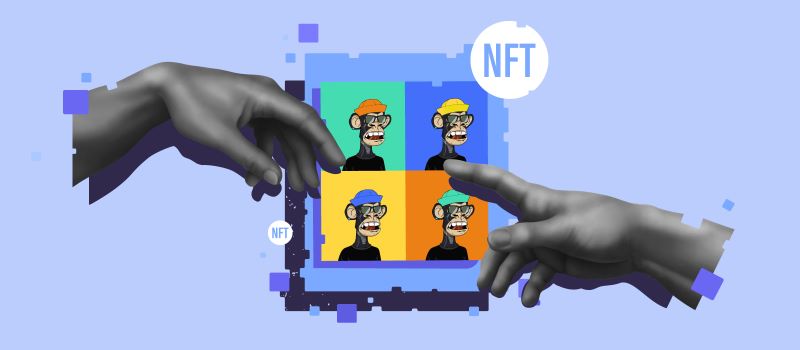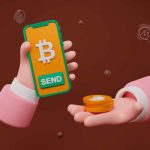Dive into this explosive trend as I break down what is NFT cryptocurrency. These aren’t your typical digital items; NFTs morph art, ownership, and tech into one. If you’re baffled by how a meme or tweet can sell for big bucks, you’re not alone. Here, I’ll strip away the mystery of NFTs, showing you they’re more than just pricey digital art. Buckle up for a crash course on how these unique assets are flipping the script on traditional collecting and trading. With NFTs, every pixel counts as proof of ownership, and the implications are massive. Let’s peel back the layers of this digital asset phenomenon together.
Understanding NFTs: Beyond Just Digital Art
Unpacking the Concept of Non-Fungible Tokens (NFTs)
You hear about NFTs and think digital art. But they’re so much more! NFTs, or non-fungible tokens, are a special kind of crypto asset. They let us own unique digital items. Think of each NFT as a one-of-a-kind trading card, but digital. Once you buy an NFT, you own it. The blockchain keeps track. Ethereum is one popular home for these. It’s a system that makes sure everyone agrees on who owns what.
Picture blockchain as a giant digital ledger. It’s shared across many computers. This means no one person can say they own your NFT if they don’t. With NFTs, we talk about digital scarcity. This means there are only so many, kind of like diamonds. This makes them special. Also, they prove who first made the digital item. This is huge for artists and creators.
The Rich Variety of NFT Digital Assets
Now, NFT digital assets can be just about anything digital. Yes, art is big, but it’s just the start. We see NFT collectibles, like digital trading cards. There’s also music, videos, and even tweets! Then there are games where NFTs play a huge part. They let players own in-game gear.
Many people use crypto wallets to keep their NFTs safe. If you want to sell your NFT, you can! There are NFT platforms like marketplaces just for this. Buyers pay in cryptocurrency, then boom, they own the NFT. The market for these is growing fast.
And what’s cool is that NFTs can even be used for things in the real world. Like tickets to a concert or owning a unique design. NFTs also use smart contracts. These are like set rules that run on blockchain. They handle the sale and transfer of the NFT, no middleman needed.
Each NFT is different. They are not like regular cryptocurrency, where every token is the same. The rare ones can be worth a lot more. It’s key to know about minting NFTs, too. Minting is making an NFT, and it puts your creation out on the blockchain for all to see.
So, owning an NFT means you have something no one else has: a digital one-of-a-kind. You can show it off, sell it, or keep it. All while the blockchain confirms it’s yours. As you dig into this world, keep learning. Understand the tech, like Ethereum and smart contracts. Realize how special NFTs are. It’s a new era of digital ownership, with endless possibilities.
Remember, whether you’re buying and selling NFTs or just curious, this is just the beginning. Their reach goes way beyond art to almost any digital thing. And as we move more and more online, who knows what will be an NFT next?
The Technology Behind NFTs: Blockchain Fundamentals
How Smart Contracts Power NFTs
You might wonder, “What are smart contracts?” Well, think of them as robot promises. They are like deals that live on the blockchain. They make sure that once you buy or sell an NFT, all the agreed parts of the deal happen without anyone cheating.
Smart contracts are the secret sauce for NFTs. They keep track of who owns what and spread the word automatically. When you buy an NFT, the smart contract updates to say, “Hey! This person now owns this digital thing!” They are like the rulekeepers in the digital world, making sure every trade is fair and square.
These are not just simple rules; smart contracts can handle complex deals as well. For example, an NFT artist can get paid a bit of money each time their NFT changes hands. It’s like a painter getting a thank you tip every time their painting is sold again.
The Role of Ethereum Blockchain in NFT Development
Now, let’s chat about the big player: the Ethereum blockchain. This is where most NFTs live. It’s a kind of super-computer that everyone can check on. When people talk about blockchain technology, they mean a big, secure list of information that nobody can mess with. This list is copied across lots of computers to make it super strong and hard to break.
Why Ethereum? It’s special because it was the first one to say, “Hey, let’s add smart contracts!” This made it the perfect home for NFTs. NFT basics tell us that uniqueness is key, and Ethereum’s tech makes sure every NFT is a one-of-a-kind thing. You can prove that you really own it, and nobody else – like owning a rare stamp.
But that’s just a tiny part of what Ethereum does for NFTs. It also lets anyone build their own NFT platforms right on top of it. It’s like building a new game on top of a game board. These platforms are like digital galleries where people show off their digital art or sell virtual goods.
Ethereum and NFTs go hand-in-hand. It’s where your digital treasures are kept safe and sound, each one locked to its smart contract. And just like in a game, Ethereum makes sure everyone plays by the rules with its blockchain technology. It’s the backbone of the whole NFT market.
In short, NFTs would just be pictures and files without the power of the Ethereum blockchain and smart contracts. It’s that tech that turns them into something you can own, trade, and treasure. Understanding this, we start to see how blockchain technology isn’t just about cryptocurrency. It’s about creating and sharing one-of-a-kind digital assets, each with its own story, in a way that’s safe and sound.
Navigating the NFT Market: Trading and Trends
Exploring NFT Platforms and Marketplaces
Let’s dive into where you can find NFTs. Think of NFT platforms like giant online malls. Each store is different. Some sell super cool digital art; others offer unique collectibles. They’re fun spots to explore what artists and creators are making.
What’s an NFT platform? An NFT platform is where people buy and sell NFTs—it’s the go-to spot for checking out digital items you can own.
Once you’ve found a platform, you can browse tons of NFT stuff. You might see artwork that pops off the screen or trading cards that can’t be found anywhere else.
How do NFTs work? They’re like special codes that prove you own a digital thing, thanks to blockchain technology. It’s a super, super secure way to keep track of who owns what.
So if you’re thinking, “Hey, I want one!”, you’re ready to jump in. But where do you start? Well, you need a bit of Ethereum— it’s like the money for NFTs, mostly because many NFTs live on the Ethereum blockchain.
The Process of Buying and Selling NFTs
When you’re set to buy, first you need a digital wallet. This wallet keeps your Ethereum safe and lets you do deals on most NFT platforms.
How do you buy an NFT? You pick something you like, click buy, and use your Ethereum to pay for it. It’s like an online shop, but you get a cool NFT instead.
After buying, it’s yours to keep, show off, or even sell. When you want to sell an NFT, it’s a bit like setting up your own shop. You put up a picture and set a price. People can then bid on it, and just like that, you’re selling your NFT!
How do you sell an NFT? Pop it up for sale, set the price or auction it, and wait for someone who loves it as much as you did to buy it.
Remember, NFTs are about being one of a kind—like having the only key to a treasure chest. This is because of digital scarcity. There’s only so many that can exist, which keeps them special.
The fun part is all the different types of NFTs out there. There’s NFT art, collectibles, and even parts of games. These aren’t just pictures; they’re more like cool things you own and can use in digital worlds.
What makes an NFT valuable? Stuff like who made it, what it looks like, or if it’s super rare. People might think, “Wow, this is cool, I’ve got to have it!”
And don’t worry about someone copying your NFT. Those blockchain smarts we talked about? They also make sure your NFT stays as yours only. If you’re into sharing, you can show it to the world as much as you like!
So, buying and selling NFTs is a new way to collect cool digital stuff. Just remember to keep your wallet handy, look around, and have fun finding that NFT that shouts, “You need me!” Every now and then, you might stumble upon something truly amazing and, who knows, it could be the next big thing in the digital world!
The Future of NFTs: Legal, Environmental, and Investment Perspectives
Intellectual Property Challenges and NFT Legality
Have you ever asked, “What makes an NFT legit?” Let’s dig into that. NFTs link to digital items like art. They help prove who owns them. It’s not always clear, though, who gets to make or sell an NFT. The tricky part? Laws are playing catch-up. Just because you buy an NFT doesn’t mean you own all rights to that digital item. Sometimes, the artist keeps some rights. NFT buyers usually can’t make copies to sell. So, it’s super important to know what you’re really getting.
NFTs can make sure creators get credit for their work. They use trusty blockchain tech to track ownership. This way, artists can sell their digital work, like a painting or song, without a middleman. But, sometimes people make NFTs of stuff they don’t own. Not cool, right? The law is stepping in to protect rights here. If you’re thinking of making or buying an NFT, checking the law first is a smart move.
NFT Investments and Environmental Considerations of Gas Fees
Now, let’s talk cash and caring for our planet. Investing in NFTs might sound cool, but how do they work? You’ve got to know something about gas fees. This isn’t about your car. Gas fees are payments we make to use the Ethereum blockchain. They change a lot and can get pretty high.
These fees help keep the network secure. Every time you do something with NFTs, like making or moving them, you’re asking the network to put in some work. To make that happen, you pay gas fees. So when you’re looking to invest, remember these fees are part of the deal.
But here’s a head-scratcher: the environment. These gas fees mean lots of computer power, and that uses a bunch of energy. Some are worried this hurts our planet. The good news? People are working on ways to cut down on this. They’re making changes so we use less energy when dealing with NFTs.
When investing, think long-term. Are the NFTs you like cool enough that others might want them later? That’s key to making good choices. Look for digital items that are rare and have a reason to be wanted, like special art or game items.
When you’re in the know about the rules and eco-stuff, you’re set to make smart NFT moves. Remember, it’s not just about the now, but also the future of your NFT journey.
In this post, we dove into NFTs and saw that they’re more than just digital art. We uncovered how non-fungible tokens work and checked out all kinds of digital goodies you can own. We also learned that NFTs run on smart contracts and that the Ethereum blockchain is a big deal for creating them.
Then, we took a trip to the NFT market. There, we learned how to buy and sell on different platforms. Finally, we looked ahead. We talked about the legal stuff, how NFTs might affect nature, and what they mean for our wallets in the future.
I think NFTs are game-changers. They’re new, exciting, and shaking up how we think about owning cool stuff online. But let’s keep our eyes open to the big picture—laws, planet health, and our cash. The NFT world is wild, and it’s smart to stay sharp as we step into the future.
Q&A :
What Exactly is NFT Cryptocurrency?
NFTs, or Non-Fungible Tokens, represent a unique digital asset that cannot be exchanged on a one-to-one basis, differing from typical cryptocurrencies like Bitcoin or Ethereum which are fungible and can be traded equally. NFTs are typically associated with digital goods such as artwork, collectibles, or in-game items, and they are built on blockchain technology, ensuring authenticity and ownership records.
How Does NFT Cryptocurrency Differ From Regular Cryptocurrency?
While both NFTs and regular cryptocurrencies are based on blockchain technology, the key difference lies in the fungibility. Regular cryptocurrencies are fungible, meaning each unit is identical and can be replaced or exchanged. On the other hand, NFTs are non-fungible, with each token having unique properties and not being directly replaceable by another token. This uniqueness is what often gives NFTs their value.
Can You Convert NFTs Into Traditional Money?
Like other assets, NFTs can be bought and sold on various online platforms, and their value is determined by market demand. When an NFT is sold, it can indeed be converted into traditional currency, depending on the cryptocurrency used in the transaction. However, the value of NFTs can be highly volatile, and there is no guarantee of converting them into a fixed amount of traditional money.
Why Are NFTs Considered a Part of the Cryptocurrency World?
Even though NFTs represent unique digital items, they are considered a part of the cryptocurrency world because they exist on a blockchain network, most commonly Ethereum. The blockchain acts as a decentralized ledger that verifies and records transactions, and it is also the underlying technology for cryptocurrencies. This shared foundation of blockchain technology is what ties NFTs to the realm of cryptocurrency.
What Are the Main Uses of NFT in Cryptocurrency?
NFTs are used in a variety of ways within the digital economy. They are widely associated with the art and entertainment industry, where they authenticate the ownership of digital art, music, videos, and more. In addition, NFTs play a significant role in online gaming, acting as proof of ownership for virtual goods and assets. They are also used in licensing, real estate, and other fields that benefit from transparent and secure proof of ownership.





